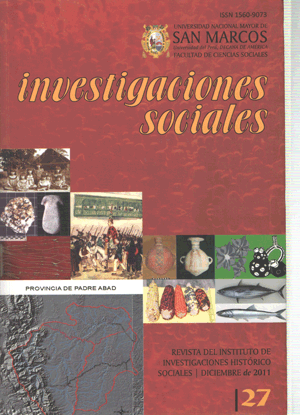St. Joseph of Quiruvilca rigin and vicissitudes of a miner seat
DOI:
https://doi.org/10.15381/is.v15i27.7667Keywords:
Child, mining, money, labor, profit, business, population, wages.Abstract
In 1629, mining began in the hills of Quiruvilca, saw the department of La Libertad, but the large vein was discovered and worked since 1634, thanks to the constancy of Fernando de Ahedo and Saravia, founder of the mining seat, who gave it the name of St. Joseph of Quiruvilca. From the start brewing workers were never compelled to mitas. Silver produced good law. Martinez was visited by Compañon, Bishop of the Bourbon era humanist. He had a labor system according to the customs of the XVII to XIX. In the XX came under the control of transnational corporations in addition to silver, other metals extracted. Continues today, during which time has given rise to a large human population living in a urban settement.Downloads
Published
Issue
Section
License
Copyright (c) 2011 Waldermar Espinoza Soriano

This work is licensed under a Creative Commons Attribution-NonCommercial-ShareAlike 4.0 International License.
AUTHORS RETAIN THEIR RIGHTS:
a. Authors retain their trade mark rights and patent, and also on any process or procedure described in the article.
b. Authors retain their right to share, copy, distribute, perform and publicly communicate their article (eg, to place their article in an institutional repository or publish it in a book), with an acknowledgment of its initial publication in Investigaciones Sociales.
c. Authors retain theirs right to make a subsequent publication of their work, to use the article or any part thereof (eg a compilation of his papers, lecture notes, thesis, or a book), always indicating the source of publication (the originator of the work, journal, volume, number and date).













